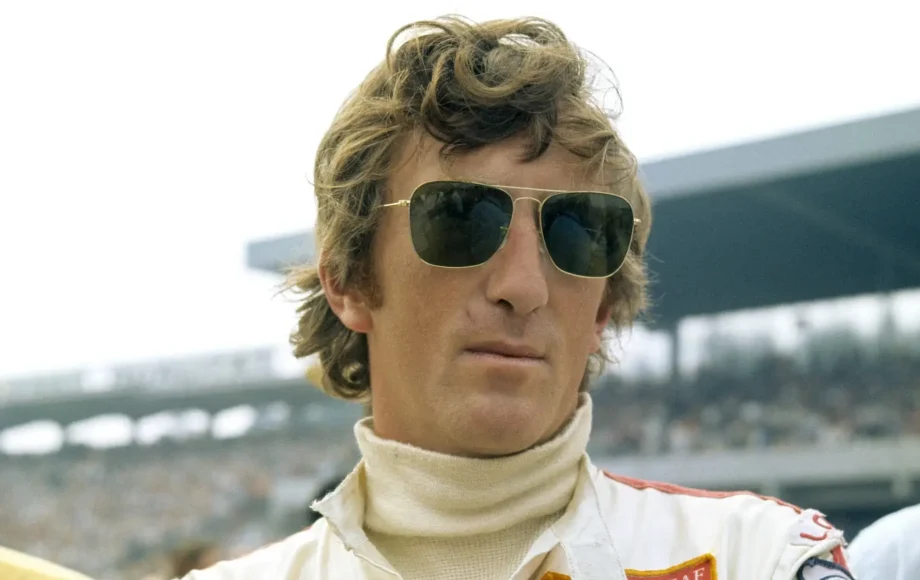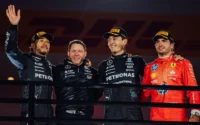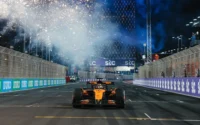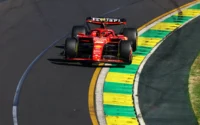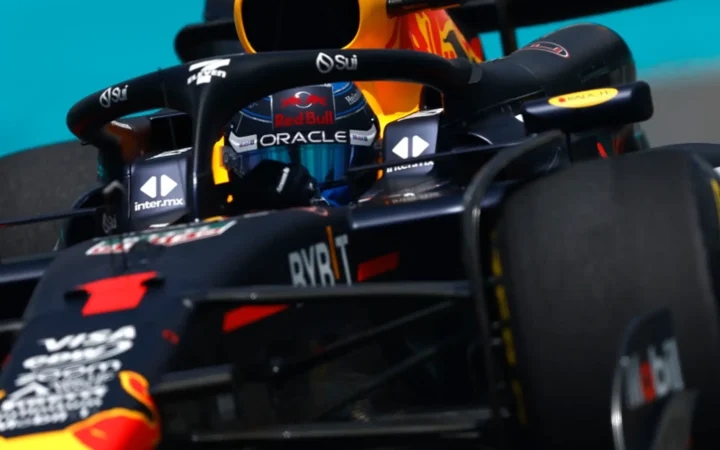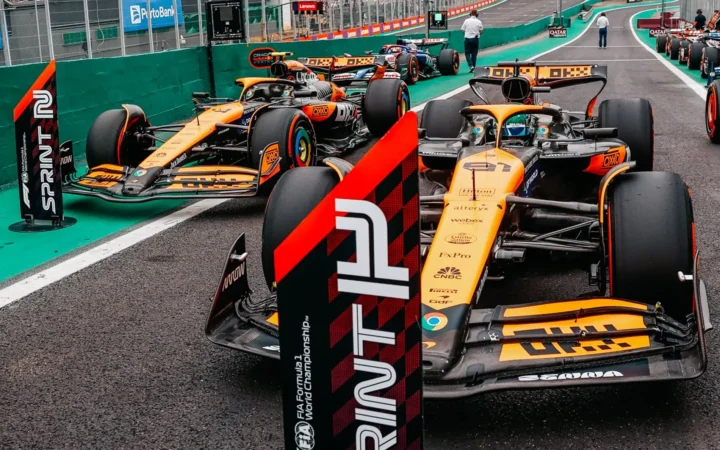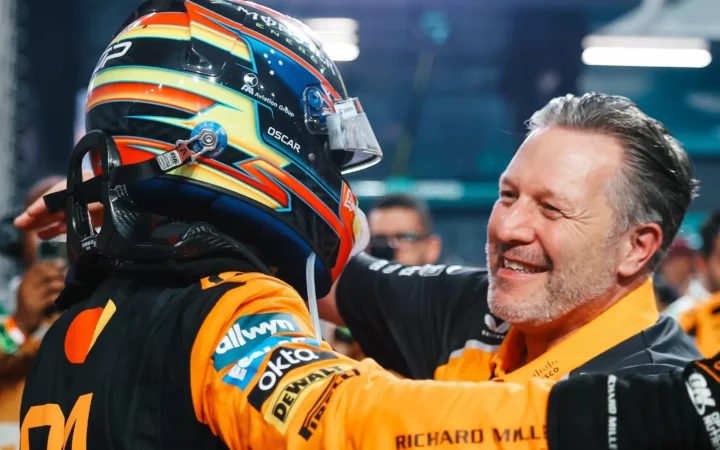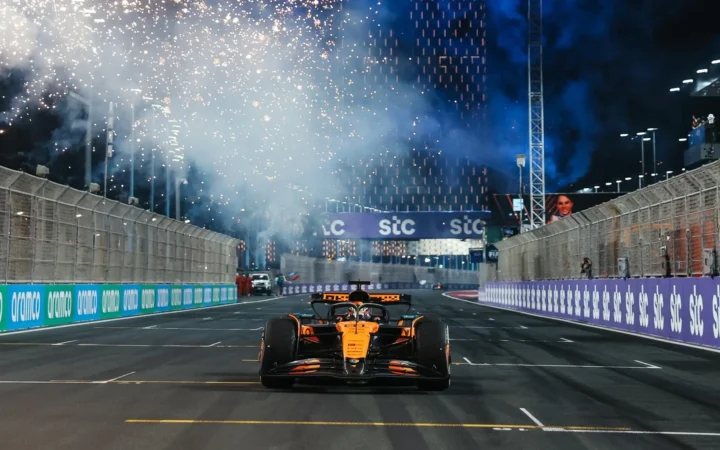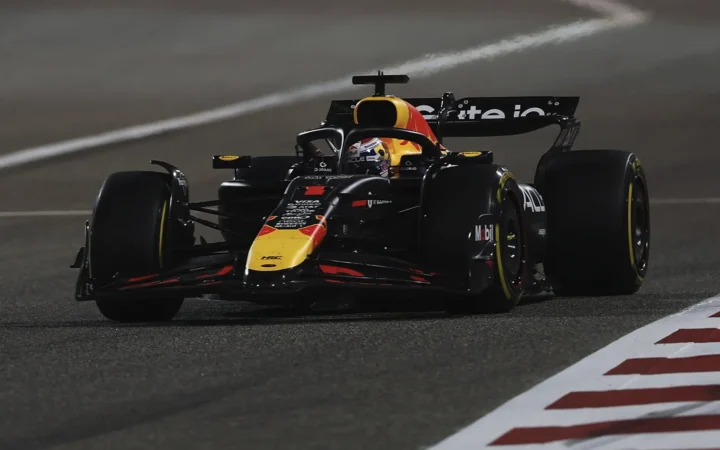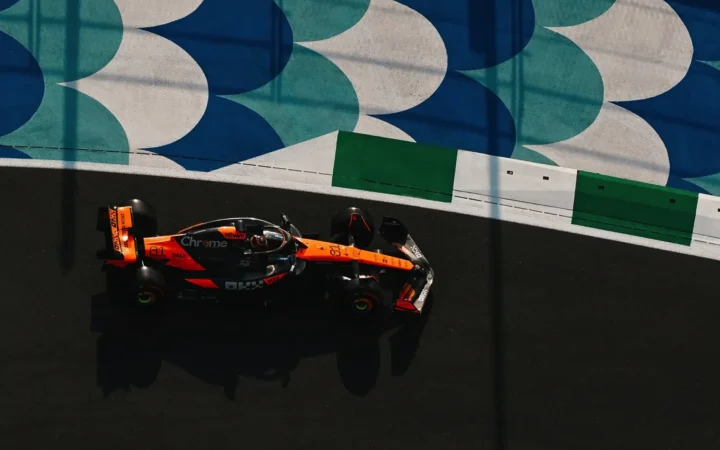Over the years, a total of over 50 Formula One drivers have tragically lost their lives while participating in the sport. Thanks to significant advancements in safety, the frequency of fatal accidents has decreased substantially. Marussia driver Jules Bianchi is the most recent Formula One driver to die as a result of an accident.
What to know
- The most deaths in a decade were 15 in the 1950s.
- The least fatalities were in the 1990s and the 21st century.
- Austrian and Lotus driver Jochen Rindt is the only driver to be crowned world champion posthumously.
- The Indianapolis Motor Speedway stands out as the track with the most accidents, claiming the lives of seven drivers during the Indianapolis 500.
Since its inception in 1950, Formula One has witnessed 32 driver fatalities during Grand Prix weekends, 7 during test sessions, and 13 in non-championship events. The list below honours all drivers who lost their lives in accidents involving Formula One cars during race weekends, training sessions, and other related events.
Fatal Accidents in F1. A Complete List.
Fifteen drivers lost their lives in the 1950s, followed by 14 in the 1960s, 12 in the 1970s, 4 in the 1980s, 2 in the 1990s, and 5 more in the 21st century. The United Kingdom has the highest number of fatalities, with 14 British Drivers losing their lives in Formula One cars.
Fatalities by Decade
| Decade | Total | First | Last |
|---|---|---|---|
| 1950s | 15 | 1952 | 1959 |
| 1960s | 14 | 1960 | 1969 |
| 1970s | 12 | 1970 | 1978 |
| 1980s | 4 | 1980 | 1986 |
| 1990s | 2 | 1994 | 1994 |
| 2000s | 2 | 2000 | 2002 |
| 2010s | 3 | 2014 | 2017 |
| Total | 52 | 1952 | 2017 |
The Indianapolis Motor Speedway stands out as the track with the most accidents, claiming the lives of seven drivers during the Indianapolis 500, which was part of the World Championship in the 1950s.
Fatalities by Circuit
| Circuit | Total | First | Last |
|---|---|---|---|
| Indianapolis Motor Speedway | 7 | 1953 | 1959 |
| Nürburgring | 5 | 1954 | 1969 |
| Silverstone Circuit | 4 | 1960 | 2014 |
| Autodromo di Modena | 3 | 1953 | 1961 |
| Brands Hatch | 1961 | 1977 | |
| Autodromo Nazionale di Monza | 1961 | 1978 | |
| Circuit Park Zandvoort | 1970 | 2017 | |
| Circuit de Spa-Francorchamps | 2 | 1960 | |
| Watkins Glen International | 1973 | 1974 | |
| Kyalami Racing Circuit | 1974 | 1977 | |
| Autodromo Enzo e Dino Ferrari | 1994 | ||
| MIRA | 1 | 1952 | |
| Circuit de Pau-Ville | 1955 | ||
| Circuit de Reims-Gueux | 1958 | ||
| Circuit d’Ain-Diab | 1958 | ||
| Autódromo Magdalena Mixiuhca | 1962 | ||
| Westmead Circuit | 1962 | ||
| Circuit de Monaco | 1967 | ||
| Circuit de Rouen-les-Essarts | 1968 | ||
| Österreichring | 1975 | ||
| Hockenheimring | 1980 | ||
| Circuit Zolder | 1982 | ||
| Circuit Gilles Villeneuve | 1982 | ||
| Circuit Paul Ricard | 1986 | ||
| Goodwood Hillclimb | 2000 | ||
| Autodrom Most | 2002 | ||
| Suzuka International Racing Course | 2014 | ||
| Total for 27 circuits | 52 | 1952 | 2017 |
Austrian and Lotus driver Jochen Rindt is the only driver to be crowned world champion posthumously following his death during a qualifying session in 1970. Williams driver Ayrton Senna, a former world champion, tragically died during the 1994 San Marino Grand Prix.
Fatalities by Nationality
| Nationality | Total | First | Last |
|---|---|---|---|
| United Kingdom | 14 | 1952 | 2014 |
| United States | 10 | 1953 | 1975 |
| Italy | 7 | 1955 | 1986 |
| France | 5 | 1968 | 2017 |
| Austria | 4 | 1970 | 2002 |
| Germany | 2 | 1961 | 1969 |
| Argentina | 1 | 1954 | |
| Australia | 1977 | ||
| Belgium | 1953 | ||
| Brazil | 1994 | ||
| Canada | 1982 | ||
| Mexico | 1962 | ||
| Netherlands | 1964 | ||
| Rhodesia and Nyasaland | 1962 | ||
| Sweden | 1978 | ||
| Switzerland | 1971 | ||
| Total for 16 nationalities | 52 | 1952 | 2017 |
The following table displays a list of F1 drivers who were killed while driving a Formula One car, including those killed during a:
- Grand Prix
- Qualifying
- Practice
- Pre-race test
- Private test session
- Non-championship event
- Historic event
Detail by Driver
| No. | Country | Driver | Age | Date Of Accident | Event | Car | Session |
|---|---|---|---|---|---|---|---|
| 1 | United Kingdom | Cameron Earl* | 29 | 18 June, 1952 | N/A | ERA | Test |
| 2 | United States | Chet Miller | 50 | 15 May, 1953 | 1953 Indianapolis 500 | Kurtis Kraft | Practice |
| 3 | Belgium | Charles de Tornaco* | 26 | 18 September, 1953 | 1953 Modena Grand Prix | Ferrari | Practice |
| 4 | Argentina | Onofre Marimón | 30 | 31 July, 1954 | 1954 German Grand Prix | Maserati | Practice |
| 5 | Italy | Mario Alborghetti* | 26 | 11 April, 1955 | 1955 Pau Grand Prix | Maserati | Race |
| 6 | United States | Manny Ayulo | 33 | 16 May, 1955 | 1955 Indianapolis 500 | Kuzma | Practice |
| 7 | United States | Bill Vukovich | 36 | 30 May, 1955 | 1955 Indianapolis 500 | Kurtis Kraft | Race |
| 8 | Italy | Eugenio Castellotti* | 26 | 14 March, 1957 | N/A | Ferrari | Test |
| 9 | United States | Keith Andrews | 36 | 15 May, 1957 | 1957 Indianapolis 500 | Kurtis Kraft | Practice |
| 10 | United States | Pat O’Connor | 29 | 30 May, 1958 | 1958 Indianapolis 500 | Kurtis Kraft | Race |
| 11 | Italy | Luigi Musso | 33 | 6 July, 1958 | 1958 French Grand Prix | Ferrari | Race |
| 12 | United Kingdom | Peter Collins | 26 | 3 August, 1958 | 1958 German Grand Prix | Ferrari | Race |
| 13 | United Kingdom | Stuart Lewis-Evans | 28 | 19 September, 1958 | 1958 Moroccan Grand Prix | Vanwall | Race |
| 14 | United States | Jerry Unser Jr. | 26 | 17 May, 1959 | 1959 Indianapolis 500 | Kurtis Kraft | Pre-race test |
| 15 | United States | Harry Schell* | 38 | 13 May, 1960 | 1960 BRDC International Trophy | Cooper | Practice |
| 16 | United States | Bob Cortner | 32 | 19 May, 1959 | 1959 Indianapolis 500 | Cornis | Pre-race test |
| 17 | United Kingdom | Chris Bristow | 22 | 19 June, 1960 | 1960 Belgian Grand Prix | Cooper | Race |
| 18 | United Kingdom | Alan Stacey | 26 | 19 June, 1960 | 1960 Belgian Grand Prix | Lotus | Race |
| 19 | United Kingdom | Shane Summers* | 24 | 1 June, 1961 | 1961 Silver City Trophy | Cooper | Practice |
| 20 | Italy | Giulio Cabianca* | 38 | 15 June, 1961 | N/A | Cooper | Test |
| 21 | Germany | Wolfgang von Trips | 33 | 10 September, 1961 | 1961 Italian Grand Prix | Ferrari | Race |
| 22 | Mexico | Ricardo Rodríguez* | 20 | 1 November, 1962 | 1962 Mexican Grand Prix | Lotus | Practice |
| 23 | Rhodesia | Gary Hocking* | 25 | 21 December, 1962 | 1962 Natal Grand Prix | Lotus | Practice |
| 24 | Netherlands | Carel Godin de Beaufort | 30 | 2 August, 1964 | 1964 German Grand Prix | Porsche | Practice |
| 25 | United Kingdom | John Taylor | 33 | 7 August, 1966 | 1966 German Grand Prix | Brabham | Race |
| 26 | Italy | Lorenzo Bandini | 31 | 7 May, 1967 | 1967 Monaco Grand Prix | Ferrari | Race |
| 27 | United Kingdom | Bob Anderson* | 36 | 14 August, 1967 | N/A | Brabham | Test |
| 28 | France | Jo Schlesser | 40 | 7 July, 1968 | 1968 French Grand Prix | Honda | Race |
| 29 | Germany | Gerhard Mitter | 33 | 2 August, 1969 | 1969 German Grand Prix | BMW | Practice |
| 30 | United Kingdom | Martin Brain* | 37 | 25 May, 1970 | Nottingham Sportscar Club Meeting | Cooper | Race |
| 31 | United Kingdom | Piers Courage | 28 | 7 June, 1970 | 1970 Dutch Grand Prix | De Tomaso | Race |
| 32 | Austria | Jochen Rindt | 28 | 5 September, 1970 | 1970 Italian Grand Prix | Lotus | Qualifying |
| 33 | Switzerland | Jo Siffert* | 35 | 24 October, 1971 | 1971 World Championship Victory Race | BRM | Race |
| 34 | United Kingdom | Roger Williamson | 25 | 29 July, 1973 | 1973 Dutch Grand Prix | March | Race |
| 35 | France | François Cevert | 29 | 6 October, 1973 | 1973 United States Grand Prix | Tyrrell | Qualifying |
| 36 | United States | Peter Revson* | 35 | 22 March, 1974 | 1974 South African Grand Prix | Shadow | Pre-race test |
| 37 | Austria | Helmuth Koinigg | 25 | 6 October, 1974 | 1974 United States Grand Prix | Surtees | Race |
| 38 | United States | Mark Donohue | 38 | 19 August, 1975 | 1975 Austrian Grand Prix | Penske | Practice |
| 39 | United Kingdom | Tom Pryce | 27 | 5 March, 1977 | 1977 South African Grand Prix | Shadow | Race |
| 40 | Australia | Brian McGuire* | 31 | 29 August, 1977 | 1977 Shellsport Championship | McGuire | Practice |
| 41 | Sweden | Ronnie Peterson | 34 | 10 September, 1978 | 1978 Italian Grand Prix | Lotus | Race |
| 42 | France | Patrick Depailler* | 35 | 1 August, 1980 | N/A | Alfa Romeo | Test |
| 43 | Canada | Gilles Villeneuve | 32 | 8 May, 1982 | 1982 Belgian Grand Prix | Ferrari | Qualifying |
| 44 | Italy | Riccardo Paletti | 23 | 13 June, 1982 | 1982 Canadian Grand Prix | Osella | Race |
| 45 | Italy | Elio de Angelis* | 28 | 15 May, 1986 | N/A | Brabham | Test |
| 46 | Austria | Roland Ratzenberger | 33 | 30 April, 1994 | 1994 San Marino Grand Prix | Simtek | Qualifying |
| 47 | Brazil | Ayrton Senna | 34 | 1 May, 1994 | 1994 San Marino Grand Prix | Williams | Race |
| 48 | United Kingdom | John Dawson-Damer* | 59 | 24 June, 2000 | 2000 Goodwood Festival of Speed | Lotus | Demonstration |
| 49 | Austria | Fritz Glatz* | 58 | 14 July, 2002 | 2002 EuroBOSS Series Season | Footwork | Race |
| 50 | United Kingdom | Denis Welch* | 69 | 27 July, 2014 | 2014 Jack Brabham Memorial Trophy | Lotus | Race |
| 51 | France | Jules Bianchi | 25 | 5 October, 2014 | 2014 Japanese Grand Prix | Marussia | Race |
| 52 | France | David Ferrer* | 62 | 2 September, 2017 | 2017 Historic Grand Prix | March | Race |
Deaths in Formula One
Drivers have always lived on the edge, pushing the limits of speed and endurance. Over time, significant improvements in safety have drastically reduced the number of serious injuries and fatalities in the sport, however, the early years of the championship were marked by a grim toll.
Cameron Earl
The first recorded driver fatality in F1 was Cameron Earl. He tragically lost his life during a private test session for English Racing Automobiles at the Motor Industry Research Association’s test circuit in England. Earl was just 29 years old when he succumbed to skull fractures sustained after his ERA R14B car overturned.
Chet Miller
Chet Miller holds the distinction of being the oldest driver to die in a Formula One car, tragically losing his life at the age of 50 during practice for the 1953 Indianapolis 500, which was part of the Formula One World Championship at the time. Driving his Novi Special, Miller lost control and crashed into a concrete wall at over 100 mph. Adding to the sombre events of the race, Carl Scarborough, another driver, later collapsed and died from heat exhaustion after the race’s conclusion.
Charles de Tornaco
Charles de Tornaco was a loved figure in Belgian motorsport, co-founding Ecurie Belgique — a team that later evolved into the famous Ecurie Francorchamps. He spent most of his racing career driving Ferraris for the outfit he helped create. Tragically, during practice for the 1953 Modena Grand Prix, de Tornaco rolled his car and sustained severe head and neck injuries. With no proper medical support at the track, he was rushed to hospital in a private car but died on the way.
Onofre Marimón
Onofre Marimón competed in 12 Formula One World Championship Grands Prix with Maserati, scoring two podiums — at the 1953 Belgian and 1954 British Grands Prix — and earning a total of 8 1⁄7 championship points. He also claimed victory in the non-championship 1954 Rome Grand Prix, driving the Maserati 250F. Tragically, Marimón became the first driver to die during a Formula One Grand Prix weekend when he lost control of his car during practice for the 1954 German Grand Prix at the Nürburgring, crashing into a ditch and rolling the car.
Mario Alborghetti
Mario Alborghetti was an Italian racing driver who made his Formula One debut with the Volpini-Arzani team at the 1955 Pau Grand Prix — a notoriously tricky circuit, particularly for a rookie. Qualifying near the back of the grid and already several laps down after multiple pit stops, Alborghetti lost control at the hairpin while being lapped by Jacques Pollet’s Gordini. In what appeared to be a moment of panic, he hit the accelerator instead of the brakes, crashing heavily into straw bales. Several spectators were slightly injured, while Alborghetti suffered fatal head and chest injuries; his helmet was torn off in the impact. His death was not made public until after Jean Behra had won the race. The Volpini-Arzani car was briefly entered again for the 1955 Italian Grand Prix but failed to make an impact and soon disappeared from the scene.
Manny Ayulo
Manuel Ayulo was an American racing driver whose work alongside teammate and friend Jack McGrath helped prove the competitiveness of track roadsters in top-level racing. Tragically, Ayulo was killed during practice for the 1955 Indianapolis 500 when his car went straight into a concrete wall. It was later revealed he hadn’t been wearing a seatbelt, and his pockets were reportedly full of wrenches at the time of the crash.
Bill Vukovich
Bill Vukovich was one of the standout talents of American motorsport in the 1950s. He won back-to-back Indianapolis 500s in 1953 and 1954, along with two other AAA National Championship races, and is still widely regarded as one of the greatest drivers of his era. Known for his raw speed and fearless driving, Vukovich remains the only driver to have led the most laps in three consecutive Indy 500s.
Tragically, Vukovich was killed while leading the 1955 Indianapolis 500 by 17 seconds. On lap 57, a crash involving Rodger Ward, Al Keller, and Johnny Boyd triggered a chain-reaction accident that left Vukovich with nowhere to go. His car went airborne over the wall, flipped multiple times, and landed upside down on parked vehicles before bursting into flames. Despite heroic efforts by fellow driver Ed Elisian to reach him, Vukovich had died instantly. Two spectators were also injured when his car landed on their Jeep. He was the second defending Indy 500 champion to die in the race’s history and the only former winner to be killed while leading.
Eugenio Castellotti
Eugenio Castellotti was a talented Italian racing driver who competed in 14 Formula One Grands Prix between 1955 and 1957. Nicknamed “il Bello” for his striking looks, he also made a name for himself in sports car racing, winning both the Mille Miglia and the 12 Hours of Sebring with Ferrari in 1956. Castellotti’s life was tragically cut short at just 26 during a private Ferrari test session at the Modena Autodrome. Under direct orders from Enzo Ferrari to beat a lap time recently set by Maserati’s Jean Behra, Castellotti lost control at a chicane, hit a high kerb, and was thrown from the car, which flipped multiple times before coming to rest in the stands. He died instantly from a severe skull fracture; no one else was injured.
Keith Andrews
Keith Andrews was an American racing driver who tragically lost his life during practice for the 1957 Indianapolis 500. Giuseppe Farina, the only European entrant that year, had been struggling with handling issues and couldn’t get his car up to speed. On 15 May, Andrews stepped in to test Farina’s car but lost control on the front straight. The car spun and backed into the inside wall separating the pit lane, fatally crushing Andrews between the cowl and fuel tank — though no fire broke out. Following the accident, Farina withdrew from the event, with no backup car available.
Pat O’Connor
Pat O’Connor was an American racing driver who lost his life in a tragic first-lap crash at the 1958 Indianapolis 500. The race saw a disastrous start when Ed Elisian spun in Turn 3 and collided with pole-sitter Dick Rathmann, triggering a massive 15-car pileup. O’Connor’s car was launched into a roll, caught fire, and he sustained fatal head injuries in the crash. He was killed instantly, marking one of the most devastating opening laps in Indy 500 history.
Luigi Musso
Luigi Musso was an Italian Formula One driver who competed from 1953 to 1958, securing one win — the 1956 Argentine Grand Prix with Ferrari — along with seven podiums, a fastest lap, and three non-championship victories. Musso’s career was cut short at the 1958 French Grand Prix at Reims. While chasing teammate Mike Hawthorn on lap 10, he ran wide at the fast and unforgiving Gueux Curve. His Ferrari 246 struck a ditch, went airborne, and somersaulted violently. Musso suffered critical head injuries and died later that day in hospital. Hawthorn went on to win the race.
Peter Collins
Peter Collins was a British Formula One driver who raced from 1952 to 1958, winning three Grands Prix and earning nine podiums in the World Championship, along with four non-championship wins. He also enjoyed success in endurance racing, taking victory at the 1958 12 Hours of Sebring with Ferrari. Just weeks after winning the British Grand Prix, Collins tragically lost his life during the German Grand Prix at the Nürburgring.
While chasing Tony Brooks’s Vanwall through the challenging Pflanzgarten section, Collins pushed too hard, ran wide, and hit a ditch. His Ferrari was launched into the air, flipped, and landed upside down. Thrown from the car, Collins struck a tree and suffered severe head injuries; he died later that day in hospital in Bonn. His death came just weeks after teammate Luigi Musso’s fatal crash, and it deeply affected close friend Mike Hawthorn, who retired from racing immediately after winning the 1958 title. Hawthorn himself died in a road accident the following year. Tony Brooks later said that his battle with Collins and Hawthorn that day was the hardest he had ever raced.
Stuart Lewis-Evans
Stuart Lewis-Evans was a talented British racing driver who competed in 14 Formula One Grands Prix between 1957 and 1958. Driving for Vanwall, he achieved two podiums, two pole positions, and scored 16 championship points, finishing ninth in the 1958 World Drivers’ Championship. He was seen as a rising star of British motorsport and played a key role in Vanwall’s successful campaign for the inaugural Constructors’ title.
Tragically, his career and life were cut short at the season-ending 1958 Moroccan Grand Prix at the Ain-Diab circuit. When the engine of his Vanwall seized at high speed, Lewis-Evans crashed into the barriers and his car erupted in flames. He suffered severe burns and was flown back to the UK for treatment, but died six days later. His death cast a shadow over Vanwall’s championship triumph, and team boss Tony Vandervell, deeply affected by the loss, withdrew from Formula One at the end of the year.
Jerry Unser Jr.
Jerry Unser was an American racing driver and the 1957 USAC Stock Car champion. He was the first member of the famous Unser family to compete at the Indianapolis 500. In his sole race start in 1958, he walked away uninjured from a dramatic 13-car pile-up that sent his car over the Turn 3 wall. Tragically, Unser was killed the following year during practice for the 1959 Indy 500, leaving behind his wife Jeanne and two sons, Jerry and Johnny. During a practice run ahead of qualifying, Unser lost control exiting Turn 4. His car struck the wall, somersaulted down the front straight, and burst into flames. Despite being conscious and calling for help, he suffered a broken neck and third-degree burns over 35% of his body. He remained in a coma and died from his injuries and pneumonia two weeks later. In the aftermath, fire-resistant suits became mandatory at Indy — a change that would go on to save lives in future decades.
Harry Schell
Harry Schell was an American Formula One driver who competed from 1950 to 1960 and was a familiar presence in both championship and non-championship events throughout the decade. His life was tragically cut short during practice for the 1960 BRDC International Trophy at Silverstone. Driving a Cooper T51, Schell lost control at Abbey Curve at around 100 mph. His car slid into mud, lost a wheel, and somersaulted into a barrier, bringing down a brick wall. The crash proved fatal, ending the career of one of F1’s early American drivers.
Bob Cortner
Bob Cortner was an American racing driver from Redlands, California, who tragically lost his life while preparing for his first Indianapolis 500. After successfully passing his rookie test on 18 May 1959, Cortner returned to the track the following day to begin practice. Strong crosswinds were reported, and fellow driver Johnny Parsons later said it was the worst wind he’d ever seen at the Speedway. Caught by a gust, Cortner’s car veered into the infield before suddenly shooting back across the track and slamming head-first into the outer wall. He suffered massive head injuries and was pronounced dead later that evening. His death marked the second fatality at the Speedway that year — following Jerry Unser — and was the 50th in the track’s 50-year history.
Chris Bristow
Chris Bristow was a British Formula One driver known for his raw speed and aggressive style, earning a reputation as the “wild man of British club racing” due to frequent spins and collisions. The son of a London garage owner, Bristow competed in four World Championship Grands Prix but scored no points. He was just beginning to make his mark in the top tier of motorsport when tragedy struck.
Bristow was killed during the 1960 Belgian Grand Prix at Spa-Francorchamps, crashing at the high-speed Burnenville corner while battling Ferrari driver Willy Mairesse. His Cooper T51 hit a bank and rolled, throwing him into nearby barbed wire fencing, which decapitated him. His body lay on the track for the remainder of the race. He was 22, the youngest driver at the time to die in a Formula One World Championship event. The crash happened within minutes of fellow driver Alan Stacey’s fatal accident at the same corner — a place that would haunt many, including Jim Clark, who later admitted it shaped his hatred of the Spa circuit.
Alan Stacey
Alan Stacey was a British racing driver closely associated with Lotus throughout his career. He competed in seven Formula One World Championship Grands Prix between 1958 and 1960, alongside several non-championship events, but did not score any points. Remarkably, Stacey raced with an artificial lower right leg, having lost it in a motorcycle accident at the age of 17.
Stacey was killed during the 1960 Belgian Grand Prix at Spa-Francorchamps, just minutes and metres away from the fatal crash of fellow British driver Chris Bristow. Running in sixth place on lap 25, Stacey’s Lotus 18 reportedly struck a bird at high speed, which may have knocked him unconscious or caused a fatal injury. The car veered off at the Burnenville corner — the same spot where Stirling Moss had crashed the day before — climbed an embankment, tore through thick hedges, and came to rest in a field. Stacey’s death, alongside Bristow’s, marked one of the darkest days in F1 history and had a lasting impact on the sport.
Shane Summers
Shane Summers was a British racing driver and the son of Conservative politician Spencer Summers. Although he competed in Formula One machinery, he never took part in a World Championship Grand Prix. Summers was killed during a wet practice session for the 1961 Silver City Trophy at Brands Hatch. He lost control at the notorious Paddock Hill Bend and crashed into a concrete wall at the entrance to the pit tunnel, sustaining fatal injuries.
Giulio Cabianca
Giulio Cabianca was an Italian Formula One driver whose life was tragically cut short in a freak accident during testing at the Modena Autodrome. While driving a Cooper-Ferrari F1 car for Scuderia Castellotti, Cabianca is believed to have suffered a gearbox failure that left him unable to slow down. His car veered off the circuit, struck a spectator, and exited through an open gate—left ajar due to nearby maintenance work. It then sped across the busy Via Emilia, colliding with several vehicles before crashing into the wall of a coachbuilder’s workshop. Cabianca was killed instantly, along with a minivan driver, a motorcyclist, and a cyclist.
Wolfgang von Trips
Wolfgang von Trips arrived at Monza needing a third-place finish to secure the 1961 Drivers’ Championship. However, during the race, his car collided with Jim Clark‘s Lotus, became airborne, and struck a barrier. von Trips was thrown from the cockpit and tragically killed. The accident also claimed the lives of 14 spectators who had been standing behind a trackside fence, making it one of the darkest days in Formula One history.
Ricardo Rodriguez
Ricardo Rodríguez, the youngest driver in history to race for Scuderia Ferrari, tragically became the youngest driver to die in Formula One at the age of 20. When Ferrari chose to skip the inaugural non-championship Mexican Grand Prix in 1962, Rodríguez, eager to compete in his hometown of Mexico City, secured a drive in a Lotus 24. During an unofficial practice session at the Autódromo Hermanos Rodríguez, a suspension failure caused him to misjudge a corner. Witnesses reported he was travelling too fast when his car spun, crashed, and caught fire. He succumbed to his injuries while being transported to the hospital.
Gary Hocking
Gary Hocking was a Rhodesian motorcycle and car racer, best known for his success in Grand Prix motorcycle racing. Tragically, Hocking was killed during practice for the 1962 Natal Grand Prix at the Westmead circuit in South Africa. Driving a Lotus 24 entered by Rob Walker, he lost control at the end of a long right-hand bend. The car veered sharply, somersaulted end over end, and Hocking’s head reportedly struck the roll hoop. He died hours later in hospital in Durban. The cause of the crash remains uncertain, with theories including suspension failure, incorrectly reassembled steering, or even dehydration and loss of consciousness. He was just 25 years old, and his entry into the upcoming South African Grand Prix was withdrawn following his death.
Carel Godin de Beaufort
Carel Godin de Beaufort was a Dutch nobleman and racing driver who competed in Formula One from 1958 to 1964. Known for his eccentric personality, he often raced under his own Ecurie Maarsbergen banner, typically driving Porsche machinery. During practice for the 1964 German Grand Prix at the Nürburgring, he lost control of his Porsche 718 at the notorious Bergwerk corner and sustained fatal head injuries. Outside of F1, he also entered the 24 Hours of Le Mans four times between 1959 and 1963, but failed to finish on each occasion.
John Taylor
John Taylor was a British racing driver who competed in five Formula One World Championship Grands Prix. His career was tragically cut short during the 1966 German Grand Prix at the Nürburgring, when his Brabham collided with Jacky Ickx’s Formula Two Matra on the opening lap. Taylor was pulled from the wreckage with severe burns and, despite medical treatment, succumbed to his injuries four weeks later.
Lorenzo Bandini
Lorenzo Bandini was an Italian Formula One driver who raced from 1961 to 1967, most notably with Ferrari. He claimed his only Grand Prix victory at the 1964 Austrian Grand Prix. Tragically, his promising career came to an end at the 1967 Monaco Grand Prix. While running second behind Denny Hulme on lap 82, Bandini lost control of his Ferrari 312 entering the harbour chicane. The car clipped the guardrail, hit a light pole, overturned, and smashed into straw bales lining the track, trapping him beneath the wreckage.
The crash sparked a fire, likely ignited by fuel leaking from a ruptured tank onto hot components. Bandini was pulled out unconscious, but a second fire erupted when the fuel tank exploded. Suffering third-degree burns over 70% of his body, multiple chest fractures, and a severe chest wound, he died three days later at the Princess Grace Hospital in Monte Carlo, aged 31. Bandini’s funeral in Reggiolo drew 100,000 mourners, and he was later buried in Milan’s Lambrate cemetery.
Bob Anderson
Bob Anderson was a British motorcycle Grand Prix racer turned Formula One driver. After a successful motorcycle racing career, including two wins at the North West 200 and competing in Grand Prix events from 1958 to 1960, Anderson transitioned to Formula One, racing from 1963 to 1967. Competing largely without major backing, he held his own against better-funded teams. In 1967, while testing at a wet Silverstone circuit, Anderson lost control and slid off the track, colliding with a marshal’s post. He sustained severe chest and neck injuries and died later that day in Northampton General Hospital.
Jo Schlesser
Jo Schlesser was a French racing driver who competed in both Formula One and sports cars, participating in three World Championship Grands Prix. In 1968, he was given a Formula One opportunity with Honda, who had developed the experimental, air-cooled RA302. The car had been tested and strongly criticised by lead driver John Surtees, who deemed it unsafe and refused to race it. Nonetheless, with backing from Honda France and the appeal of a French driver at the French Grand Prix in Rouen, Schlesser was chosen to drive. On just the second lap, he lost control at the fast Six Frères corner, and the magnesium-bodied car — carrying a full fuel load — crashed into a bank and burst into flames. Schlesser was killed instantly. The tragedy led to Honda’s immediate withdrawal from Formula One at the end of the 1968 season.
Gerhard Mitter
Gerhard Mitter was a talented German driver who competed in both Formula One and sports car racing. Known for his skill at the Nürburgring, he was entered in the 1969 German Grand Prix in BMW’s Formula 2 269, taking part in the separate F2 classification allowed due to the circuit’s length. During practice at the high-speed Schwedenkreuz section, Mitter was killed in a crash suspected to have been caused by a suspension or steering failure. In the wake of the tragedy, BMW withdrew its other entries, Hubert Hahne and Dieter Quester, while Porsche teammate Hans Herrmann also pulled out.
Martin Brain
Martin Brain was a British racing driver and mechanic, best known for British hillclimbing and club-level racing. A popular figure in the hillclimb community, Brain finished runner-up in the 1968 British Hillclimb Championship, driving a Cooper T81B Formula One chassis fitted with a powerful 7.2-litre Chrysler V8 engine — a bold combination that earned him one win and four second places. In 1969, he campaigned both the T81B and a Cooper T86B BRM, securing fourth in the championship with two more victories. He also notched up Formula Libre wins at Silverstone in 1969 and Croft in 1970. Tragically, Brain was killed in May 1970 during a race at Silverstone, when his F1-spec Cooper BRM left the track while dicing with Graham Eden’s Chevron and flipped.
Piers Courage
Piers Courage was a talented British racing driver who competed in Formula One from 1967 to 1970 and a rising star in the sport and a key driver in Williams’s early F1 journey. In 1970, Frank Williams partnered with Alejandro de Tomaso to field a new De Tomaso-designed chassis. The car proved heavy and unreliable, though Courage managed a third-place finish in the non-championship International Trophy. Tragedy struck at the 1970 Dutch Grand Prix at Zandvoort, where a suspected front suspension or steering failure sent his car straight off at high speed at Tunnel Oost. The car hit a dune, broke apart, and burst into flames — magnesium components intensifying the fire, setting nearby vegetation alight. During the crash, a front wheel struck Courage’s head, tearing off his helmet; he likely died instantly from the impact. Courage was just 28.
Jochen Rindt
Jochen Rindt remains Formula One’s only posthumous World Champion, securing the 1970 title despite missing the season’s final three races. Rindt tragically lost his life during final practice for the 1970 Italian Grand Prix at Monza while driving a Lotus 72C. Under heavy braking, he lost control of the car, which crashed into the perimeter fencing and disintegrated. The accident occurred in the same location where Wolfgang von Trips had died nine years earlier.
Rindt, who had recently begun wearing a seat belt, sustained severe injuries, and it is believed the belt caused a fatal throat injury as he slid down inside the cockpit during the crash. Despite his death, Rindt’s dominant performance earlier in the season earned him the championship by five points over Jacky Ickx, cementing his legacy in Formula One history.
Jo Siffert
A veteran of 100 Formula One starts, Jo Siffert tragically lost his life during a non-championship race at Brands Hatch, the 1971 World Championship Victory Race. The suspension on his BRM failed, causing him to crash. Trapped in the car as it caught fire, Siffert died of smoke inhalation. A subsequent investigation revealed that the trackside fire extinguishers were non-functional. This tragedy led to significant safety reforms, including mandatory in-car fire extinguishers and piped air systems to provide breathable air directly into drivers’ helmets.
Roger Williamson
Roger Williamson was a promising British racing driver and two-time British Formula 3 champion, whose life was tragically cut short during only his second Formula One Grand Prix. After making his F1 debut at the 1973 British Grand Prix, Williamson returned to the grid at Zandvoort for the Dutch Grand Prix. On lap eight, a suspected tyre failure sent his car flipping at high speed near the Tunnel Oost section. It landed upside down and caught fire. Though not seriously injured in the crash itself, Williamson was trapped beneath the burning wreckage.
In a heartbreaking scene that would haunt motorsport for years, track marshals—poorly trained and ill-equipped—failed to assist. Fellow driver and close friend David Purley stopped his own race and ran across the live track to try to save him. He attempted to right the car and used a fire extinguisher in a desperate solo rescue effort, urging others to help. But without proper fireproof gear or sufficient support, the marshals could not intervene effectively. Williamson perished in the flames, while Purley’s bravery became one of the most poignant moments in Formula One history and a catalyst for improving trackside safety standards.
François Cevert
François Cevert was a gifted French Formula One driver who competed with Tyrrell from 1969 until his death in 1973. A rising star in the sport, he claimed his only Grand Prix victory at the 1971 United States Grand Prix and was widely tipped to become Tyrrell’s team leader following Jackie Stewart’s planned retirement. Tragically, Cevert was killed during qualifying for the 1973 United States Grand Prix at Watkins Glen while fighting for pole position against Ronnie Peterson. At the fast, flowing “Esses” section, he ran slightly wide, clipped a kerb, and lost control. His car struck the trackside barriers at high speed and then slammed into the barriers on the opposite side at nearly a right angle. The impact was catastrophic, and Cevert died instantly from massive injuries. His death cast a long shadow over the weekend and marked the end of an exceptional talent taken far too soon.
Peter Revson
Peter Revson was an American racing driver and heir to the Revlon cosmetics fortune, who competed in Formula One between 1964 and 1974. Talented and charismatic, Revson achieved two Grand Prix victories during his F1 career and also enjoyed success in sports car and IndyCar racing. Tragically, he was killed during a test session ahead of the 1974 South African Grand Prix at Kyalami. While driving the Shadow DN3, a front suspension failure caused the car to crash violently at “Barbecue Bend”, striking the Armco barrier and catching fire. Though rescue workers and fellow drivers reached the scene quickly and pulled him from the wreckage, Revson had already succumbed to his injuries.
Helmuth Koinigg
Helmut Koinigg was an Austrian Formula One driver whose life was tragically cut short during only his second Grand Prix start. Competing in the 1974 United States Grand Prix at Watkins Glen, Koinigg was running near the back of the field when a suspension failure sent his car into the Armco barrier at Turn 7. Although the crash occurred at relatively low speed and should not have been fatal, the poorly installed barrier failed catastrophically. The lower portion gave way, allowing the car to slide underneath the upper section, which remained rigid and caused fatal injuries by decapitating him. Koinigg was killed instantly in an accident hauntingly similar to the one that had claimed François Cevert at the same circuit just a year earlier.
Mark Donohue
Mark Donohue, nicknamed “Captain Nice”, was a celebrated American racing driver and engineer, known for his technical skill in setting up cars as well as his talent behind the wheel. Midway through the 1975 Formula One season, Donohue and the Penske team switched from their problematic PC1 chassis to the March 751. Just days after setting a closed-course speed record at Talladega, Donohue arrived in Austria for the Grand Prix at the Österreichring. During practice, a tyre failure caused him to lose control at Turn 1 (Vöest Hügel Kurve), and his car crashed into the catch fencing. A track marshal was killed by flying debris, but Donohue initially appeared only mildly injured. However, after complaining of a worsening headache, he was admitted to hospital in Graz the following day, where he lapsed into a coma and died from a cerebral haemorrhage.
Tom Pryce
In a tragic turn of events at the 1977 South African Grand Prix, Ferrari driver Niki Lauda emerged victorious, making an important step towards reclaiming the Drivers’ title from Britain’s James Hunt, who finished fourth in the race for McLaren. However, the race was overshadowed by the harrowing death of promising British driver Tom Pryce. A fiery incident involved Renzo Zorzi’s stationary car near the grandstand, leading two marshals to dash across the track. Tragically, one marshal, Jansen van Vuuren, was fatally struck by Pryce at high speed, and Pryce himself was killed instantly when an extinguisher hit him with such force that it removed his helmet. His car continued uncontrolled, eventually crashing into the barriers. Pryce, who had expressed concerns about the impact of death on his loved ones, died at the age of 27, witnessed by his wife from the stands.
Brian McGuire
Brian McGuire was an Australian racing driver and constructor who moved to the UK alongside fellow countryman Alan Jones, though he never matched his friend’s success. McGuire entered two British Grands Prix in Formula One. In 1976, driving a privately run Williams FW04, he was listed as a reserve and did not start. The following year, he modified the FW04 into his own McGuire BM1, but failed to pre-qualify. Tragically, McGuire was killed later in 1977 while practising the BM1 for a Shellsport G8 Championship race at Brands Hatch.
Ronnie Peterson
The 1978 Italian Grand Prix is remembered for a multi-car pile-up at the first corner that ultimately led to the death of Ronnie Peterson, a supremely talented driver. Riccardo Patrese collided with James Hunt, triggering a chain reaction that launched Peterson’s Lotus into the barriers, splitting it in half before it caught fire. Hunt, along with Clay Regazzoni, bravely ran back to drag Peterson from the wreckage. Although Peterson was hospitalised, initial assessments suggested his injuries were not life-threatening. However, he underwent surgery on his legs that night, and complications arose when a blood clot formed, causing Peterson to slip into a coma and die early the next morning.
Patrick Depailler
Patrick Depailler tragically lost his life during testing ten days ahead of the 1980 German Grand Prix. Depailler’s car experienced suspension failure, causing him to crash into the Hockenheim circuit’s barrier at Ostkurve, and suffer fatal head injuries. The car skidded along the top of the guard rail for several hundred feet prior to flipping onto its top. Throughout his career, Depailler started 95 races, winning two and achieving 19 podium finishes.
Gilles Villeneuve
During the final moments of qualifying for the 1982 Belgian Grand Prix, Ferrari driver Gilles Villeneuve collided with the slower-moving car of Jochen Mass. The impact launched Villeneuve’s car into the air at approximately 140 mph before it slammed into the ground and disintegrated as it spun to a halt. Villeneuve was discovered in the catch fencing, still strapped to his seat but without his helmet. He sustained a fatal neck fracture in the crash.
Riccardo Paletti
In just his second Formula One race, Riccardo Paletti suffered a tragic accident at the start of the 1982 Canadian Grand Prix. Travelling at approximately 100 mph, he crashed into the back of Didier Pironi‘s car, which had stalled on the grid, sustaining severe chest injuries. Although medical aid arrived within seconds, his car’s full fuel tank ignited shortly after, engulfing the vehicle in flames. Thanks to his fire-retardant overalls, Paletti escaped without burns. However, it took 25 minutes to extract him from the wreckage, and he succumbed to his injuries shortly after arriving at a nearby hospital.
Elio de Angelis
On May 15, 1986, Elio de Angelis died following a fiery accident during testing at the Paul Ricard circuit in France. The rear wing of his Brabham detached at high speed, causing his car to cartwheel off the track and over the crash barriers. While the impact did not kill him, the lack of marshals at the test meant he struggled to escape the burning wreckage, and he later died from smoke inhalation. Alain Prost and Nigel Mansell attempted to rescue him. The tragic circumstances of his death weighed heavily on the sport’s conscience, prompting FISA president Jean-Marie Balestre to implement several measures to improve safety. De Angelis is often considered the last of F1’s gentleman racers, known for his wealthy background and talent as a concert pianist.
Roland Ratzenberger
The 1994 San Marino Grand Prix is often remembered as one of the darkest weekends in F1 history, marked by multiple tragic incidents. On Friday, Rubens Barrichello miraculously survived a terrifying airborne crash during practice, hitting the wall at over 225 km/h and being left unconscious. The sombre tone of the weekend escalated on Saturday when Roland Ratzenberger tragically lost his life during qualifying. His Simtek S941 suffered a front wing failure at the high-speed Villeneuve Kink, causing him to crash into the wall at over 300 km/h. Ratzenberger, who had damaged the wing on the previous lap but continued to fight for a grid spot, succumbed to a basal skull fracture.
Ayrton Senna
Tragedy struck again on Sunday when three-time World Champion Ayrton Senna was fatally injured during the race. A steering failure on his Williams FW16 caused him to crash into the concrete wall at Tamburello at approximately 135 mph. He died from severe head injuries after being struck by a steering arm. In the wreckage of Senna’s car, officials discovered an Austrian flag, which he had planned to raise in honour of Ratzenberger had he won the race.
These back-to-back fatal accidents prompted a major overhaul of safety regulations in Formula One, fundamentally transforming the sport. Senna remains the only World Champion to have been fatally injured during a race weekend, apart from Jochen Rindt, who won his championship posthumously.
John Dawson-Damer
On 24 June 2000, a tragic accident during the hillclimb at the Goodwood Festival of Speed claimed the lives of amateur driver John Dawson-Damer and track marshal Andrew Carpenter, in front of thousands of spectators. Dawson-Damer, 59, lost control of his F1 Lotus 63-Ford Cosworth DFV just after crossing the finish line. The car put a rear wheel on the grass, skidded, and slammed into a gantry at high speed, striking two people before crashing into nearby trees. It’s believed Dawson-Damer may have suffered a sudden medical episode, as he did not appear to lift off the throttle while the car veered out of control. He was killed instantly, leaving behind a wife and two children.
Fritz Glatz
Friedrich “Fritz” Glatz was an Austrian racing driver from Vienna, known for competing under various pseudonyms including Pierre Chauvet and Frederico Careca. In 2002, while driving a 1996 Arrows Footwork FA17 Formula One car in a EuroBOSS race at Autodrom Most, Glatz lost control after bouncing over a kerb, causing the car to become airborne. He sustained fatal injuries in the crash and died shortly before his 59th birthday.
Denis Welch
Denis Welch was a British racing driver and businessman, best known as the founder of Denis Welch Motorsport, established in 1976 to specialise in performance parts for Austin-Healey and Jaguar cars. A passionate historic racer, Welch tragically lost his life during the 2014 Silverstone Classic while competing in a F1 Lotus 18 in the Jack Brabham Memorial Trophy for pre-1966 Formula One cars. Starting from the back of the grid due to gearbox issues in qualifying, Welch became caught in a first-lap incident when two cars ahead collided. Unable to avoid the crash, his car made contact and was launched into a roll. He was taken to the circuit’s medical centre but sadly succumbed to his injuries.
Jules Bianchi
At the 2014 Japanese Grand Prix, Marussia driver Jules Bianchi suffered a diffuse axonal injury after crashing into a recovery vehicle during severe wet conditions. The vehicle was on track to remove Adrian Sutil‘s car, which had crashed a few laps earlier. The incident bore an unsettling resemblance to María de Villota’s 2012 testing crash with the same team.
Bianchi was immediately transported to the hospital, where he remained in a coma for nine months before succumbing to his injuries on 17 July 2015. The tragedy prompted a thorough FIA investigation, leading to the introduction of the Virtual Safety Car system and the HALO cockpit protection device, both aimed at preventing similar accidents and improving driver safety.
David Ferrer
David Ferrer, a 61-year-old French veteran racer, was tragically involved in a fatal accident during the fifth round of the 2017 FIA Masters Historic Formula One Championship at the Historic Grand Prix Zandvoort. Driving a historic March 701-Ford Cosworth once raced by Chris Amon and Henri Pescarolo, Ferrer lost control approaching the fast Arie Luyendyk corner and crashed heavily into a barrier. Paul Tattersall, following closely in an Ensign N179, left the track while avoiding the wreckage. The March 701 was destroyed in the impact, and Ferrer was treated at the scene before being airlifted in critical condition to a specialist trauma hospital in Amsterdam. Despite the efforts of medical teams, he sadly succumbed to his injuries five days later.
Track Marshal Deaths in F1. A Complete List.
Track marshals are often the unsung heroes of Formula One, working tirelessly to ensure the safety and smooth running of the season’s race weekends and sessions. Positioned perilously close to the action, these individuals are often volunteers passionate about the sport and willingly risk their lives to protect drivers and maintain order during races. Tragically, some have paid the ultimate price for their commitment. Among them are Günther Schneider, Jansen van Vuuren, Paolo Gislimberti, Graham Beveridge, and Mark Robinson, whose deaths serve as a sobering reminder of the dangers involved in motorsport and the selflessness of those who support it from the sidelines. Their sacrifices underscore the vital role of marshals in F1, making them true heroes of Formula One.
| Name | Age | Date Of Accident | Event |
|---|---|---|---|
| Günther Schneider | 19 | 4 August 1963 | 1963 German Grand Prix |
| Jansen van Vuuren | 19 | 5 March 1977 | 1977 South African Grand Prix |
| Paolo Gislimberti | 33 | 10 September 2000 | 2000 Italian Grand Prix |
| Graham Beveridge | 52 | 4 March 2001 | 2001 Australian Grand Prix |
| Mark Robinson | 38 | 9 June 2013 | 2013 Canadian Grand Prix |
The Evolution of F1 Safety
Since its inception in the mid-20th century, Formula 1 has made significant strides in safety, resulting in a dramatic decrease in fatal accidents within the sport. One of the most notable advancements is the introduction of the HALO cockpit protection system, which was developed after Jules Bianchi’s tragic accident in 2014.
The HALO has demonstrated its effectiveness multiple times, most notably during the 2020 Bahrain Grand Prix, where it played a crucial role in saving the life of Haas driver Romain Grosjean. The race was red-flagged for eighty minutes after his car split in two and burst into flames. He clipped the AlphaTauri of Daniil Kvyat on the straight after Turn 3, causing Grosjean’s car to veer into the trackside crash barrier. The impact happened at 192 km/h (119 mph) with an estimated force of 67 g.
The collision force caused the crash barrier to split, allowing the front half of the car to penetrate through and causing the driver’s compartment to collide with the upper section of the split barrier. The HALO device, part of the driver’s safety system, was credited with saving Grosjean from more severe injuries or potential death by protecting his head and body from the impact with the barrier. Grosjean described the HALO from his hospital bed as “the greatest thing that we brought to Formula One, and without it, I wouldn’t be able to speak to you today.”
Despite the severity of the crash, Grosjean escaped with second-degree burns on his hands. Due to his injuries, he could not compete in the season’s final two races. At the end of the season, Grosjean moved to the IndyCar Series, making this race his final appearance in Formula One.
This most recent innovative safety solution, the HALO, highlights the sport’s ongoing commitment to prioritising driver safety. The FIA’s report on the accident recommended further improvements to the construction specifications for fuel cells, survival cells, and steering columns. It also called for evaluations of power unit mounting, fire suppression systems, and the effectiveness of drivers’ gloves and helmet visors.
For a complete list of the deaths of F1 Drivers’ including their birthdays and when a Drivers’ or Constructors’ Championship was won visit our F1 Records section of the site.
Seen in:

